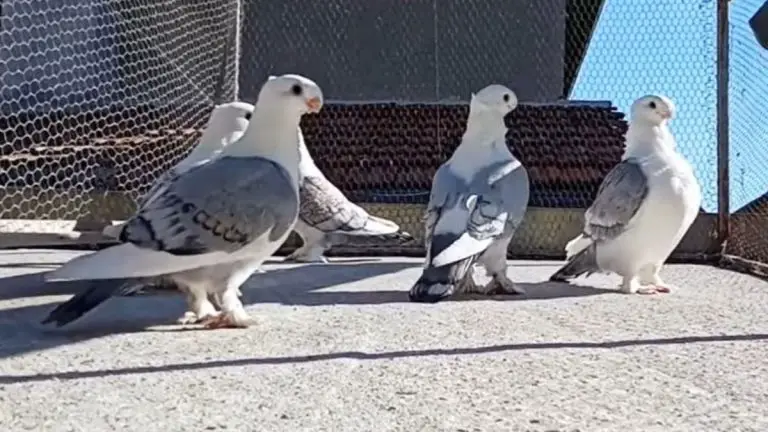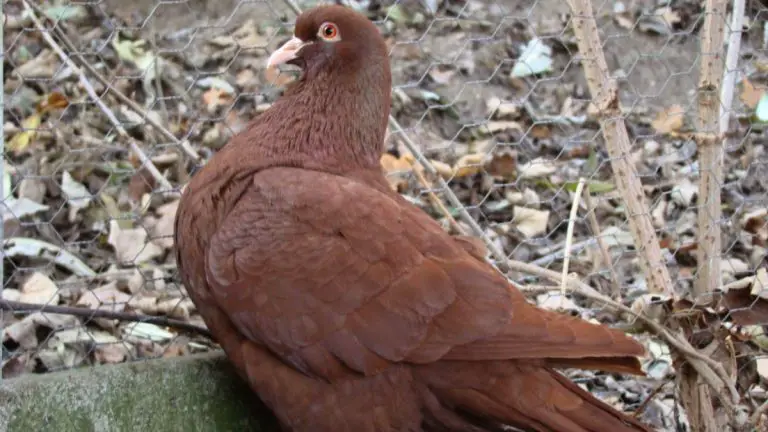Jacobin Pigeon: Origin, Physical Traits, Uses, Care, And More
The Jacobin pigeon falls under the category of fancy birds and was developed following years of selective breeding. This breed is popular for its unique appearance which involves a feathered hood over its head. Its head is well hidden with around 5 to 6 feathers—giving it a fluffy but elegant, regal appearance.
This Jacobin pigeon guide will discuss everything you need to know about this breed of pigeon including its rich history, physical appearance, behavior and temperament, diet, habitat, breeding guide, lifespan, cost, and so much more.
Jacobin Pigeon Quick Facts:
| Scientific name | Columba livia domestica |
| Other names | None |
| Breed name | Jacobin |
| Origin | India |
| Breed purpose | Exhibitions, ornamental |
| Size | Small to medium |
| Diet | Seeds, grains, vegetables, fresh fruits |
| Flying ability | Average |
| Cost | $100 or more |
| Lifespan | Up to 10 years |
Origin and history
The Jacobin pigeon originated in Asia (India, to be precise). It was developed from a mutation that goes all the way back to the 1500s and has gone through major development stages to reach where it is today.
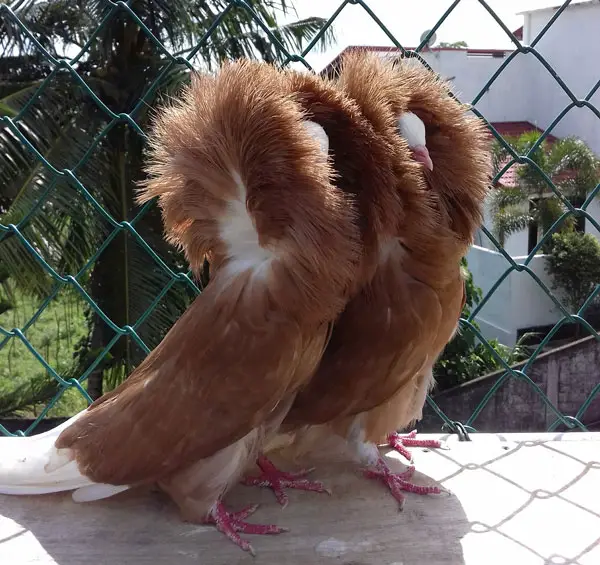
Like all the other varieties of domesticated pigeons, this bird is a descendant of the rock pigeon.
It got its name from the Jacobin order of monks who existed around 1100. These monks were well known for their distinctive hooded preferences. The bird’s hood is similar to the cap on the garments worn by the monks.
This fancy pigeon was primarily bred for exhibition and ornamental purposes. Today, this bird is quite popular and bred across the world, including Germany and England where you’ll find a nucleus of breeders.
Appearance
A typical Jacobin pigeon is small to medium-sized, though the fluffy feathers surrounding its body can give you the impression that it’s a big bird.
This bird exudes elegance with its unique appearance—with a splendid hood that covers its head. This is why the bird is best suited for show or ornamental purposes.
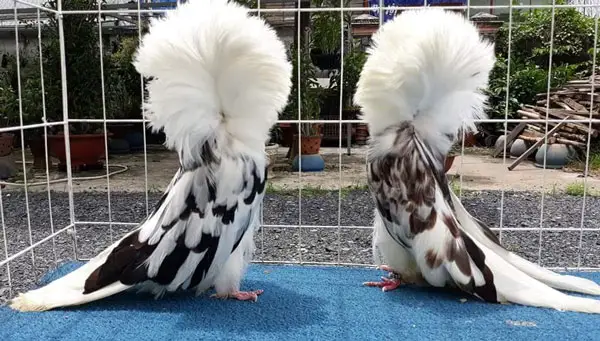
It has a relatively slender and tall body. It has an approximate body weight of around 350 grams and its body height is around 14 inches.
Its wings are pretty long and the legs are bare with no feathering.
One drawback of the hood is that it obstructed its vision—the bird can’t see well to its sides. For this reason, it prefers to stay on the floor most of the time and only flies a little.
As for the color varieties, Jacobin pigeons come in these options: red, yellow, slider, white, black, and blue with black bars.
Behavior and temperament
Jacobins are generally known for their calm and gentle temperament. They can make good pets provided you’re willing to invest the time and effort it takes to take good care of them.
Jacobins are pretty social, so they’ll the company of fellow birds as well as human companionship. Just make sure you’re gentle and patient with your pigeon.
However, these pigeons tend to be quite territorial, especially during mating season. For this reason, you’re advised to house the cocks separately in the breeding pairs to keep them from being aggressive to fellow male birds.
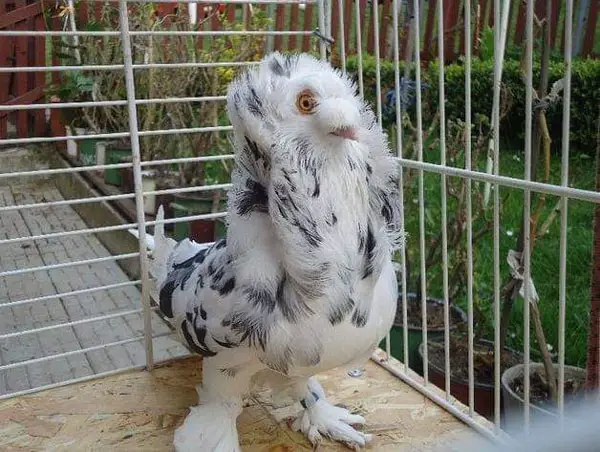
Jacobin pigeon diet
The Jacobin pigeon isn’t different from other pigeon breeds and will feed on seeds, nuts, fruits, and vegetables. It will also occasionally eat animal proteins, e.g. small insects.
Some of the food varieties to consider for this bird include maize, wheat, paddy, rice, flax, millet, sorghum, legumes, etc. As for the fruits, the pigeon can eat varieties such as blueberries, raisins, cherries, grapes, etc.
Jacobin pigeons also tend to eat small insects, worms, and snails from time to time.
In addition to food, you’ll also need to provide your pigeon with clean and fresh water at all times. And be sure to clean its water dish before putting it in water for it to drink.
Note that feeding your Jacobin pigeon a balanced and nutritious diet is essential for promoting growth in your pigeon and keeping them healthy at all times.
Breeding
Jacobin pigeons are generally excellent breeders, and they’ll easily breed if housed together (i.e., a male and a female).
Depending on your location, the pigeons can start the breeding process towards the end of July or around the middle to the end of summer.

However, keep in mind that the muff and cowl features of these birds may present a problem during mating. As such, breeders prefer trimming the feathers around the bird’s head to make the mating process easier.
After a successful mating process, the female Jacobin lays around 2 eggs per clutch and then starts hatching. The eggs usually take around 17 days to hatch, just like other pigeon breeds.
Jacobins are also great parents and will share the responsibility of raising their young ones. They’ll start feeding and rearing the hatchlings for weeks until they become old enough to feed on their own.
Keeping Jacobin pigeons as pets
Though this bird is primarily used for exhibitions, it can also make a good pet due to its gentle and calm nature.
However, you’ll need to provide the bird with a spacious and comfortable living space that allows it to spread its wingspan and fly around freely. It should also have horizontal bars to further promote easy movements around the cage or aviary.
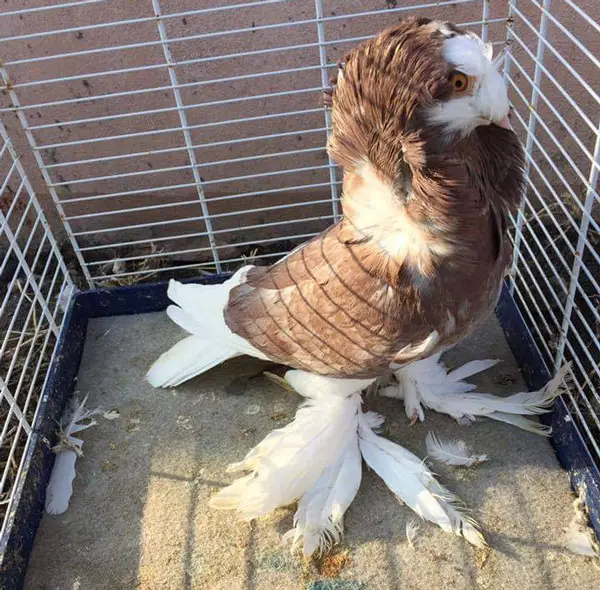
Most breeders prefer using sand on the floor compared to sawdust which is likely to get blown around. The ideal aviary for around 3 pairs of pigeons should be 4ft x 6ft x 6ft.
You’ll also need to regularly clean its living space, including wiping the surfaces, cleaning the feeding bowl and water dishes, etc. A hygienic space helps keep bacteria and other disease causes microorganisms away.
Additionally, you should regularly groom your Jacobin pigeon and maintain its unique feather arrangement that makes up its hood.
Above all, you’ll need to consistently provide your pigeon with a nutritious diet that contains a variety of food we mentioned above. Not to forget, the bird requires clean and fresh water daily.
Jacobin pigeon price
The Jacobin can cost anywhere from $100 to $400, while the high-quality breeds may cost you even more. The exact price is likely to vary depending on a variety of factors such as breeding quality, age, location, etc.
We advise buying your pigeon from a reputable breeder who is willing to provide you with documentation of its breeding history, health certificate, etc. This is key to ensuring you get a high-quality bird and a healthy Jacobin pigeon.
Jacobin pigeon lifespan
The Jacobin pigeon can live for up to 10 years with good care. However, the lifespan of this pigeon can be affected by a variety of factors including diet, environmental conditions, exercise, and even genetics.
If you want to prolong your pigeon’s lifespan, start by ensuring it has a comfortable and healthy living space, give it a nutritious diet to keep it healthy, groom it properly, and encourage regular exercise to keep it healthy.
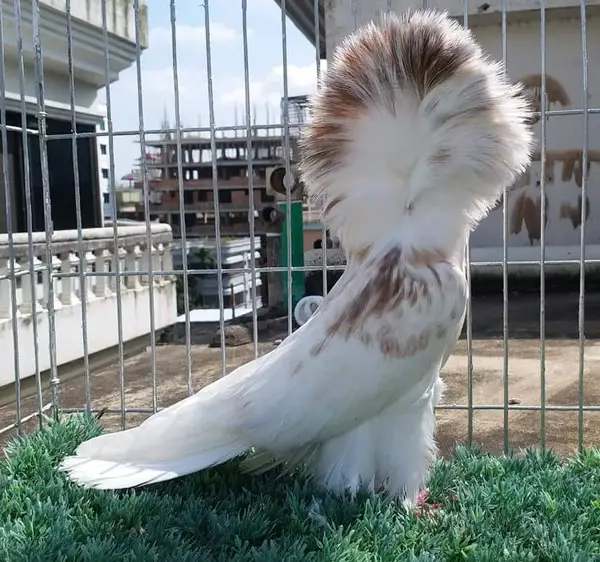
On top of all this, you should take your Jacobin pigeon to the avian vet for regular checkups. This will help ensure potential health issues are caught early enough and addressed to keep your pigeon from getting sick and thus increase its lifespan.
Do Jacobin pigeons fly?
Jacobins do fly when they get an opportunity to. However, the unique feather arrangement of this bird can give it some limitations when it comes to its flying abilities. Its feathers are usually long and more abundant, especially around the head and neck. And this can make it a bit challenging for the bird to see its side, which greatly affects its fight speed as well as the ability to fly over long distances.
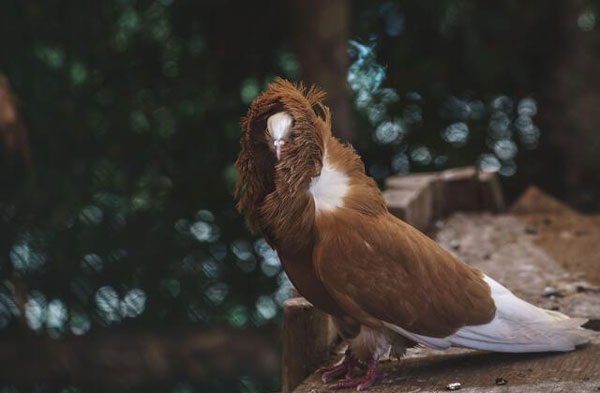
Final Verdict
Jacobin pigeons are fascinating birds with a distinctive arrangement of feathers on their head that grows upward and curves over the head top to form something like a cape or a hood. This unique appearance makes them one of the most beautiful pigeon breeds. It also makes them popular birds in pigeon exhibitions around the world. The pigeons come in a variety of colors including black, blue, yellow, white, and silver. The Jacobins also make good pets due to their gentle and calm nature. However, you’ll need to ensure you give these birds a healthy and nutritious diet, provide them with a healthy and comfortable living space, and have regular avian vet visits. With good care, a Jacobin pigeon can live for up to 10 years.



